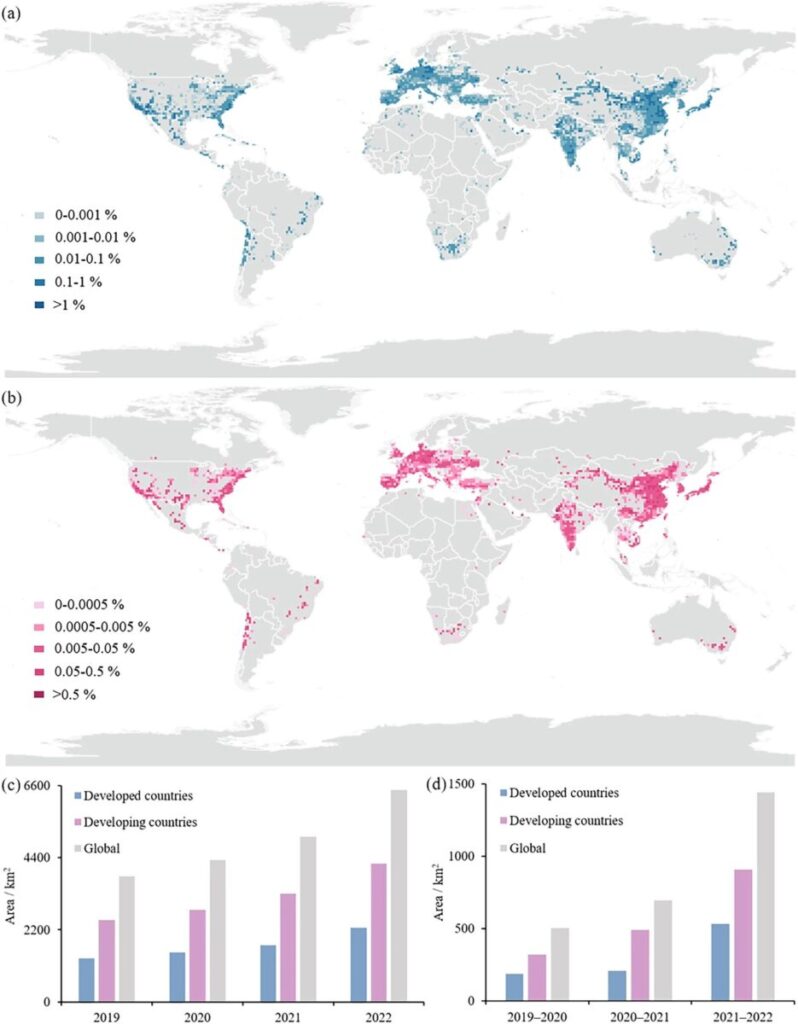With the help of Google Earth images EN 2019-2022 Sentinel-2 data sets, Chinese scientists have developed a two-stage classification framework to obtain the annual global data set of photovoltaic solar panels of sunburns at a resolution of 20 meters from 2019 to 2022.
A research team of Chinese Beijing Normal University has developed a new method for the identification of PV panels worldwide and has created a global database for the years 2019-2022.
In general, there were 6,469.8 km2 solar panels worldwide in 2022, a growth of more than 60% compared to the 3,831.6 km2 of 2019.
“This dataset offers unprecedented details and accuracy for future research and policy -making,” said the academics. “Our approach is based on the concept of the use of multi-source external detection data and multiple classifications. It aims to overcome problems such as the difficulty of sampling selection in PV extraction, the inefficiency of recognition methods and the lack of timeliness in existing PV electricity station data sets.”
To make the data set, the team used both machine learning and deep leather. The first step in their approach included the Deep Learning Model U-Net, because of the ability to find shapes and details. They fed this model with 179 annotated images with high resolution of Google Earth (GE). This trained the model to understand what PV sites look like before an extra 1,326 images were entered. The PV panels model had found it.
The PV samples from the first step were then used as examples for the Machine Learning method, Positive Non-Labeled Learning (PUL) Random forest (RA). The PUL part of this method only trains the system based on known positive examples, while the RA group uses decision -making trees to vote or have a place in an image PV panels. The Pul-Ra was then used on images of the Sentinel-2, which covered the entire plant. Each place on earth is recorded in the two -month resolution.
Image: Beijing Normal University, Scientific Data, CC by 4.0
Comparing the accuracy of the new PV data set from 2019 to 2022 with the data set of Kruitwagen, the accuracy of the new data set is more than 90%, which is slightly higher than the data set provided by Kruitwagen, “the team said.” The PV extraction method has a high accuration and stability of the validation from 2019 to 2022. PV can extract efficiently and also indicates that the production of the new Global PV data set from 2019 to 2022 is reliable. “
According to their measurements, the global PV area in 2019 was 3,831.6 km2, while in 2020 it was 4.334.4 km2 in 2021, in 2021 in 5,030.3 km2, and in 6,469.8 km2 in 2022. China is the land with the most important amount of PV and the most substantial amount of PV2 of the PV -area of a PV area of a PV -area area. By 2022. The US was second in the list of 2022, with 1,051.4 km2, India finished third with 673.9 km2 and Germany celebrated with 248.1 km2.
“Statistics about the area and change of PV solar panels in developed and developing countries of 2019-2022 show that the PV area in developing countries is much greater than in developed countries,” the academics added. “From 2022, developing countries have 4,211.2 km2 of PV, which is about twice as much as developed countries, and the amount of new PV in developing countries is also higher than those in developed countries, with the new PV area in developing countries are 1,713.3 km2. PV is the largest part of the developed countries and it is the largest part of the world -.”
The annual global PV set set is public Hosted online. Details about this appeared in “Global photovoltaic solar panel data set from 2019 to 2022“Published in Scientific data. Scientists from Chinese Beijing Normal University and the Moganshan Geospatial Information Laboratory participated in the study.
This content is protected by copyright and may not be reused. If you want to work with us and reuse part of our content, please contact: editors@pv-magazine.com.
Popular content


